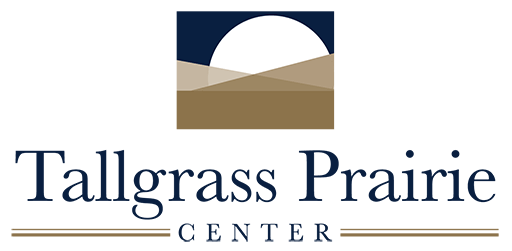Generic IRVM Plan
Table of Contents
______ COUNTY INTEGRATED ROADSIDE VEGETATION MANAGEMENT
General Plan
Section 314.22 of the Iowa Code, Integrated Roadside Vegetation Management, states:
It is declared to be in the general public welfare of Iowa and a highway purpose for the vegetation of Iowa's roadsides to be preserved, planted, and maintained to be safe, visually interesting, ecologically integrated, and useful for many purposes.
DEFINITION
Integrated Roadside Vegetation Management (IRVM)
A long term approach to vegetation management that:
- Systematically evaluates each area to be managed.
- Determines which plant communities best fit the area.
- Develops procedures that will encourage, enhance or re-establish native plant communities.
- Provides self-sustaining, diversified, visually interesting vegetation.
- Keeps safety and an improved environment as priorities.
- Utilizes the most beneficial methods to prevent or correct undesirable situations by disturbance or less than optimum vegetative ground cover.
- Enforces Chapter 317, Code of Iowa Noxious Weed Law.
INTRODUCTION
The prime purpose of road corridors is to transport people and goods safely and efficiently from one location to another. The prime purpose of roadside vegetation is to hold soil in place without creating hazards.
__________ County's vegetation management goals must meet certain safety and functional requirements before aesthetic, recreational, or economic considerations can be addressed. These are to maintain a clear zone recovery area, meet minimal sight distance requirements and provide for erosion control. We are also required by law to mow or otherwise control noxious weeds.
Through the use of IRVM, we should be able to meet the prime purposes, provide a safe corridor for travel and address other desirable uses for roadside vegetation.
The goals of the Integrated Roadside Vegetation Management Program are to:
- Preserve and provide safe, functional and environmentally improved corridors of travel throughout the county.
- Utilize a long-term integrated management program that promotes desirable, self-sustaining plant communities in roadsides, drainage districts and other public lands in __________ County.
- Encourage those plant communities that are native to Iowa through preservation and re-establish whenever practical.
- Implement a brush control program within the roadsides and county drainage districts.
- Make more efficient and effective use of chemicals as a control method of undesirable plants.
- Enhance the scenic qualities of the roadsides and their value as roadside habitat.
PROCEDURES FOR INTEGRATED ROADSIDE VEGETATION MANAGEMENT
- Inventory sites to be managed, listing areas of desirable vegetation and those needing improvement.
- Determine the appropriate management methods needed.
- Determine the best time to implement management procedures and see that they are accomplished at that time. Temporary procedures may be needed to preserve an area before permanent methods can be utilized.
INTEGRATED ROADSIDE VEGETATION MANAGEMENT METHODS
Integrated vegetation management includes the use of cultural, mechanical, biological and chemical practices. Each location must be evaluated to determine the method to be used. One or more of the following will be used:
Cultural Methods
Cultural controls can be achieved through the introduction and management of desirable plants to control noxious weeds and other undesirable plants. __________ County IRVM will use diverse native grass and forb mixes in their plantings. These diverse native plantings will be maintained and protected. Traditional lower gardening turf/lawn species may be used in clear zone areas or in front of private buildings at the landowner's request.
Prescribed fire is recognized as a valuable tool in brush and invasive plant control and can be used to enhance and maintain native plant communities. __________ County recognizes the potential hazards relating to prescribed fire. Therefore roadsides will be burned only under the safest atmospheric conditions by burn crew personnel trained and certified in the use of fire.
Mechanical Methods
This involves anything from tractor mowers for managing shoulders, weed control and planting maintenance for pruning shears, chainsaws and boom mowers for controlling brush and maintaining guardrails and the clear zone.
Biological Methods
This involves the use of animals, insects, bacteria or viruses to control plant growth. Natural enemies of noxious weeds could possibly be used in the ROW if necessary. Further research will be needed on other possible biological controls before the county will recommend them.
Chemical Methods
Selection of chemicals to be used shall be based on their label constraints and residual effects on the environment. They will be monitored to document their effectiveness and impacts upon target and non-target species.
The herbicide industry continually develops new chemicals with specific effects on specific plant species. These herbicides can be valuable tools for controlling undesirable plants on a short-term basis. __________ County herbicide applicators will be certified by the State of Iowa as public applicators in categories 1A and 6.
EDUCATION AND INFORMATION
As part of the county's IRVM plan, it will:
- Develop a public awareness campaign to gain support for integrated roadside management through media, established organizations, seminars and brochures.
- Obtain educational and informational material on IRVM to be presented in seminars and distributed to adjacent landowners, the general public, consultants and contractors.
- Provide guidelines and directives for contractors and others who seed, plant and maintain roadsides.
- Prepare and distribute instructions on preservation of desirable areas and treatment of areas that need improvement.
- Gather, develop, and distribute information with other jurisdictions, municipalities, counties and nonprofit organizations.
- Encourage research in all aspects of IRVM, e.g.: road design for improving IRVM, planting methods, management practices, seed sources, seeding rates, seed mixes, planting materials, etc.
- Encourage use of native seeds and plant materials.
- Document and map all aspects of the IRVM progress using GIS software.
This is a flexible plan that requires common sense interpretations with changes as necessary to fit the ever-changing complex circumstances realized in roadside vegetation management.
County Supervisor/Chairperson
County Engineer
Date
Date


